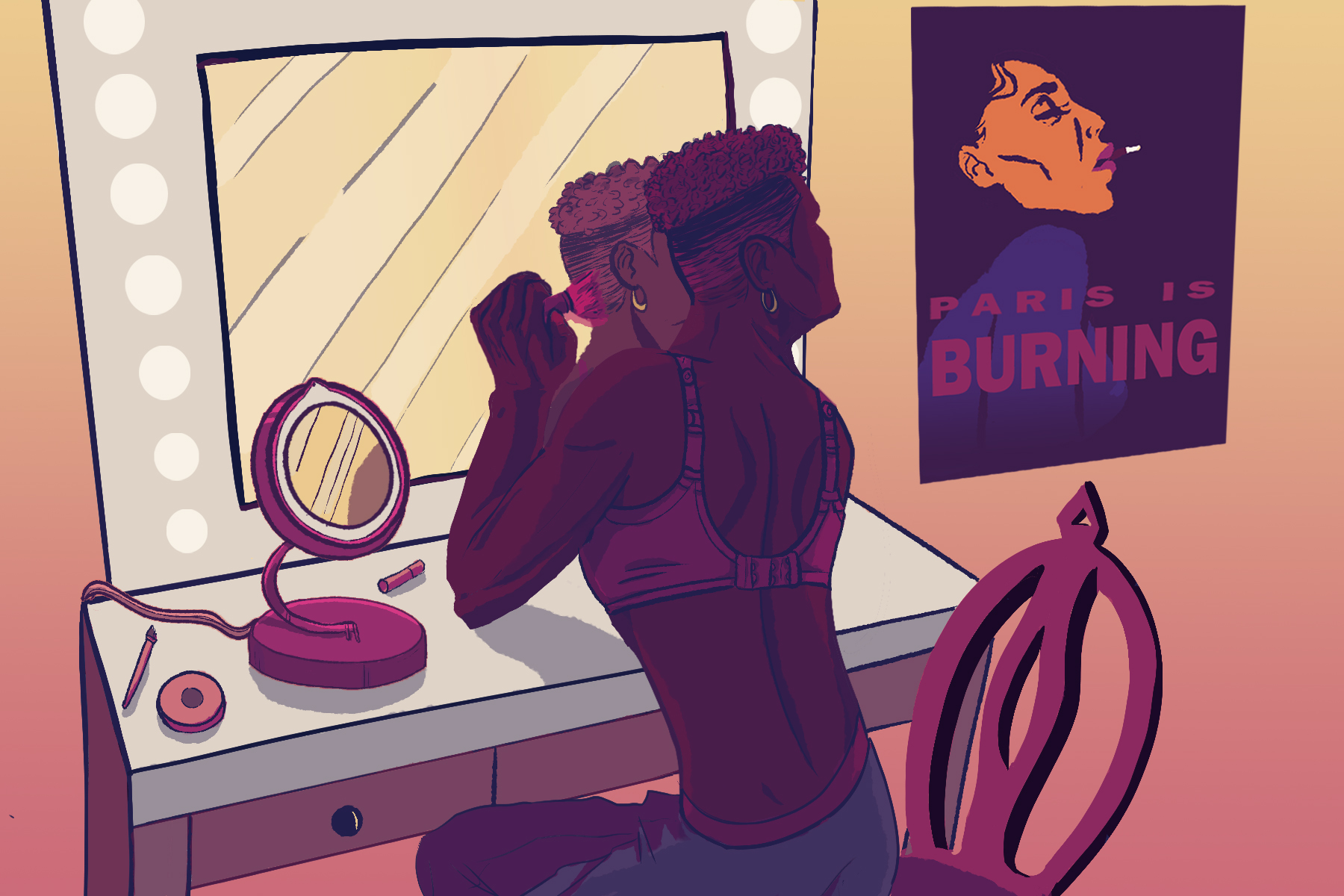In a recent Vogue profile, RuPaul mentions that the first drag queen he ever saw perform was Crystal LeBeija. This crossing of paths could not be more karmically electric. LeBeija was a legend in Harlem’s vibrant underground ballroom scene of the 1980s, a subculture made up mostly of queer men and trans women of color, brought to popular attention when it was the subject of Jennie Livingston’s seminal 1990 documentary “Paris is Burning.”
Now, nearly 30 years after the films initial release, the legacy of “Paris is Burning” still burns brightly throughout queer culture, notably through “RuPaul’s Drag Race.” The origins of nearly every catchphrase or reference that spills out of RuPaul’s mouth can be traced back to the film.
As “Drag Race” continues to grow in its monumental popularity with no signs of stopping, positioning drag and its culture at the center of public fascination, there’s no better time to revisit the film that brought this once hidden world of opulence and extravaganza to the forefront.
This is why “Paris is Burning,” which is returning to theaters in June and is available to stream on Netflix, is essential viewing.
1. It birthed the modern queer lexicon.
The diffusion of specialized slang to mainstream culture can make tracing its origins a difficult task for anyone who doesn’t know what they’re looking for. Generally, the modern queer vocabulary (think: yas queen, work!, realness, throwing shade) came to national attention and was popularized in queer circles initially through “Paris is Burning.”
As they’ve pierced through the mainstream consciousness, these phrases have mostly been credited to non-queer specific sources like “Broad City.” Though intimate knowledge of a specific slang term’s origins isn’t essential, some familiarity with its history is helpful in avoiding mindless appropriation, especially in a time where Cardi B is attempting to copyright words like “okurr,” a phrase that gained traction through drag culture.
2. It will increase your pop cultural literacy.
The world seems to have grasped the concept of shade, but do you know the difference between throwing shade and reading (shade comes from reading, by the way)? Do you know the difference between a dip and a death drop? If you don’t, “Paris is Burning” is here to teach you everything you need and more.
Watered-down versions of these concepts may have made their way to larger audiences, but they were born from the rich culture and history that the film documents.
Plus, it’s a movie that is filled with delectable one-liners that deserve to be kept in your back pocket and thrown out at a moment’s notice. A brief selection:
“Opulence! You. Own. Everything!”
“Touch this skin, darling! Touch this skin honey, touch all of this skin! Okay? You just can’t take it! You’re just an overgrown orangutan!”
“Pay your dues and enjoy it. If you shoot a arrow and it goes real high, hooray for you.”
“I don’t know why you all gagging. She brings it to you every ball!”
3. It inspired some iconic pop culture moments of the last few decades.
Through her massive hit song “Vogue,” Madonna brought voguing to the mainstream. But the pop star discovered the dance — a series of exaggerated runway poses done at lightspeed — through members of the House of Xtravaganza, who feature prominently throughout “Paris is Burning.” Since then, “Paris is Burning” has left a deep impression on music, with artists like Azealia Banks, Blood Orange and, of course, RuPaul drawing upon the movie for inspiration.
More recently, television maven Ryan Murphy cited the film as a direct inspiration for his show “Pose,” which uses New York’s ballroom scene as a backdrop. When the show premiered in 2018, it became an immediate hit, scooping up Golden Globe nominations, a Peabody Award and reigniting interest in the world of “Paris is Burning.”
4. It archives late ’80s/early ’90s New York ball culture.
Before “Paris is Burning” strut into theaters, before Madonna and before Ryan Murphy, Harlem’s ball culture possessed a singular energy that was really never the same after it captured the world’s attention.
Equal parts beauty pageant, fashion show and raucous party, the balls mostly consisted of black and Latinx queer people, meaning these gatherings were about as subversive as you could get at the tail-end of Reagan-era New York. “Paris is Burning” is the celluloid time capsule of this underground culture right before it was carted out for worldwide consumption.
5. It will send you down an internet rabbit hole.
“Paris is Burning” is essentially the queer documentary equivalent of a James Joyce novel. There about a million people featured in the film and it’s fascinating to discover where their lives took them after the film caused ball culture to explode onto the national stage. For example, Willi Ninja, the godfather of voguing, ended up appearing in a couple of Janet Jackson’s music videos and brought voguing to the late-night talk show circuit after the movie’s release.
But, possibly the most salacious story to emerge past the film’s final reel, and the one most worthy of a Google deep dive is that of Dorian Corey. She made headlines after her death not only due to her appearance in the film, but also because authorities found a mummified corpse stashed in the closet of her apartment. And yes, this story is just about as wild as you imagine.
6. It will inspire you.
“Paris is Burning” may be at its most thrilling in its ball scenes, but the heart of the film are the personalities it spotlights. Filmed and released at the height of the AIDS crisis, the film is a celebration of queer resilience and creativity. “Paris is Burning’s” cast spend a good chunk of the film’s runtime talking about being cast out by their biological families and finding a community in the ball scene. Nearly everyone featured in the movie who walks in the balls was marked by some form of subjugation, whether it be through their race, their queer identity or their poverty.
Still, the stars at the center of “Paris is Burning” uniformly displayed the uncanny ability to scrape together a glittering and, however ephemeral it may have been, glamorous life. Even as the country and its leaders attempted to erase queer life and struggle — removing basic human rights, jacking up the price of early HIV drug AZT or failing to even utter the word “AIDS” — “Paris is Burning” showed the world how to live through it, vibrantly.
It is dangerous territory to deem any single film a definitive work for an entire culture. “Paris is Burning” should merely serve as an entry point or stepping stone for anyone interested in diving deep into the world it depicts, especially as aspects of ballroom culture continue to meld into the mainstream. And so, “Paris is Burning” is still indispensable in the queer cinematic canon. The world may have become familiar enough with the language and images of queer culture to throw them around as easily as shade, but their roots run deep and deserve exploration.
















